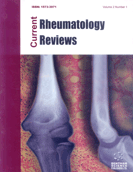Abstract
Objective: We aimed to identify any correlation between long-term proton pump inhibitor use and low bone mineral density in the elderly.
Materials and Methods: This is a retrospective cohort study looking at PPI usage and bone mineral density scores of patients age 65 and above within a period of two years. Lumbar spine, right hip, and left hip bone mineral density t-scores were reviewed in PPI users and non-users.
Results: A total of 1,016 patients who had bone mineral density scans within that period were identified. Non-adjusted data showed no statistically significant association between PPI users and non-users in lumbar spine (p = 0.903), right hip (p = 0.775) and left hip (p = 0.407) bone mineral density scores. After adjusting for age and gender, PPI use was still not associated with low bone mineral density at the lumbar spine (p = 0.957), right hip (p = 0.440), or left hip (p = 0.691). The logistic regression did not show a statistically significant difference in low bone mineral density scores in lumbar spine (p = 0.162), right hip (p = 0.796), and left hip (p = 0.196) when length of use was considered.
Conclusion: Among adults 65 years and older proton pump inhibitors users; there appears to be no correlation between PPI use and low bone mineral density and/or the length of PPI use.
Keywords: Proton-pump inhibitor, bone density, fracture, osteoporosis.










